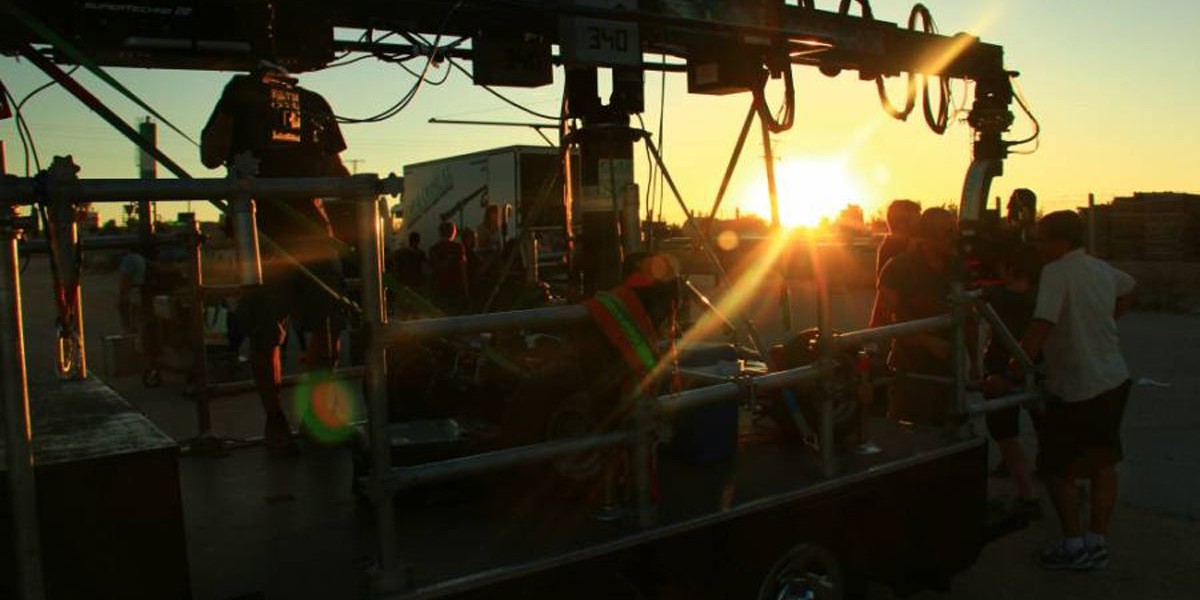There are nuances to shooting in the US that foreign producers need to know. From his bi-coastal service company in LA and NY, PSN USA partner Eric Brown shares useful insights on tapping into the top-drawer resources while toeing the line with regulations.
What are the top reasons producers shoot film and photo projects in the USA?
A: The USA has unparalleled access to top-level crews, specialty equipment, spectacular locations, and ethnically diverse talent pools in LA and NY.
Q: Does everyone on set speak English in the US?
A: The US is a country of immigrants. If requested, we’re able to provide heads of departments that speak an array of languages from Spanish to Japanese to German to Swahili… Okay, maybe that last one is a bit more difficult, but we accept all challenges!
Q: What strengths do you have in local crew? Does a DOP need to travel in, or do you have great ones with reels to present?
A: In NY and LA, there are top-level DoPs and production designers. In other cities, it may be that we bring in talent from the coasts or work with a foreign DoP. While we welcome our clients bringing their preferred technicians, we work with union crews and sometimes have to mirror their crews with some of our own.
Q: Why work with union crews?
A: By definition, a union member is a vetted and experienced professional, required to attend classes and safety seminars to keep their membership current and enhance their knowledge of equipment and procedures. While this experience and professionalism come with a cost (8-15% on the unionized crew depending on their particular union), there is a savings in time and a noticeable uptick in productivity. We are signatory to all union agreements via the AICP with the exception of the Directors Guild of America (DGA), since we don’t represent directors of our own. The DGA is not particularly flexible when dealing with foreign productions. This setup allows us to provide a top-level crew with the best technicians without our clients having to mirror their director. In the case that a director is a DGA member, we are able to make sure that our shoot is in compliance by using an outside payroll company to make sure his/her benefits are paid.
Without hijacking the conversation completely and making it solely about unions, it’s worth mentioning that the actors’ union is a separate discussion. Depending on the project, and especially if a celebrity is involved, it may be that we have to use actors that are in the Screen Actors Guild (SAG). While this increases costs significantly, we are able to make the process transparent and smooth. In most cases, when shooting in the US for foreign clients, we’re able to work with non-union actors. Whether working with union or non-union actors, it’s important to know the strengths and weaknesses of either scenario and have a discussion as to the best course of action for the particular script. In some rare cases, especially when the acting and dialogue are important, it may be worth it to splurge on higher priced actors. If there isn’t a large cast, and no domestic usage is needed, then the costs can be contained and justified.
Q: What do producers, and by extension their clients, risk when working with non-union crews?
When working non-union, there are several risks that outweigh the slight financial savings. A shoot outside of the union structure may be interrupted at any time, and the crew may be asked to walk off the job if they are union members working on a non-union project, costing both time and money. Even if the shoot is manned completely by non-union crew (which is nearly impossible, unless you’re working with recent film school grads), then the union can come down and organize the crew, making them join the union. These are some of the more common scenarios when working non-union, but there are several more ways that one can get burned. That is a conversation best had around a few glasses of wine… In any event, we’ve found that the best way to produce successfully in the US is to embrace and work within the union structure, minimizing risks and making sure that projects are completed on time and within budget.
Q: Does the US have any tricky production requisites we need to know about?
A: Besides navigating the union rules and regulations, there are civic details and permit requirements that can add some red tape to certain locations. An example would be the mandatory hiring of firemen, police, park rangers, or film monitors. Knowing when to budget for these requirements is the key to a budget without surprises.
On the topic of permits, for Los Angeles not to be one giant backlot, they are quite strict. While in LA, a permit takes 72 hours; it’s a better course of action to handle locations earlier to ensure availability. In NY, the permitting is easier for small shoots, and often times run-and-gun productions can get by without a permit. However, locations can be quite expensive, and the enforcement of the permit falls onto production and the locations departments.
Q: How about art, construction, and wardrobe, comparatively speaking?
A: Los Angeles has everything… There are specialty prop houses for space sets & props, airplane sets, classic cars, international props, and anything that your creatives can dream up. Costume houses at Universal Studios and Warner Brothers service the entire US. New York too has a great number of prop/set shops. Other cities have a limited selection of support but lean on shipments from film hubs in order to make production seamless.
Q: What are the strong and weak points of casting in your country? Do you have a wide array of ethnic diversity? How about talented performance specialists?
A: There’s no better place for casting faces from around the world than in our country of immigrants. And there’s no shortage of top performance artists to fill any director’s brief.
Q: What is the best season to shoot in the US?
A: Los Angeles is great for shooting year round. It does get dry in the summer and fall, but that means you can save money on weather insurance. New York can look great in the winter time, but it all depends on the look that is needed. My personal favorite time to shoot there is in fall when the leaves are many different colors.
Q: What special traits do you think could serve as interesting storytelling ingredients?
A: In Los Angeles, it’s very easy to shoot around the world within one shooting day. The architecture in both commercial and residential areas reflects the diversity of the city’s culture.
Q: Does the US have ample studio space? How about back lots?
A: LA and NY have an abundance of studio space, and many cities other than those have studios of different shapes and sizes. Backlots are concentrated in LA, and, in addition to outdoor spaces, there are standing sets for hospitals, banks, bars, houses, and police stations (to name a few).
Q: What local delicacies or traditions might visitors find intriguing during their stay in your country?
A: The restaurant culture in NY and LA is second to none. Top chefs from all over the world compete for their moment in the culinary spotlight before the next big thing comes along. There’s never a dull moment or a bad bite when trying to find a good meal in any city in the US. Other than eating, all major cities have sports teams, which is a personal favorite pastime of ours. Depending on the season, there is baseball, American football, basketball, and hockey.
Eric Brown
As the co-founder of a bi-coastal production company conceived in 2010, Eric provided solutions to foreign production companies, agencies, clients, and creators producing a wide array of content in the USA and all over the world. Projects include "Striving for Greatness," a virtual reality experience with LeBron James; Nintendo's Japanese market commercial for Pokemon featuring Masahiro Tanaka of the NY Yankees; Toyota Thailand's multi-spot campaign featuring Adam Levine from Grammy-winning group Maroon 5; and Uniqlo's 2018 worldwide media campaign which lensed on the Warner Bros backlot and downtown Los Angeles.
Eric prides himself on delivering a first-rate experience with a high level of transparency. The best validation of his efforts is the steady stream of repeat clients that visit job after job and year after year. Besides showing off all of what the USA has to offer for producers, Eric enjoys skiing, CrossFit, food, travel, and spending time with his wife, twin sons, and the family dog.





